Coffee Purin (Egg Custard Pudding) Recipe
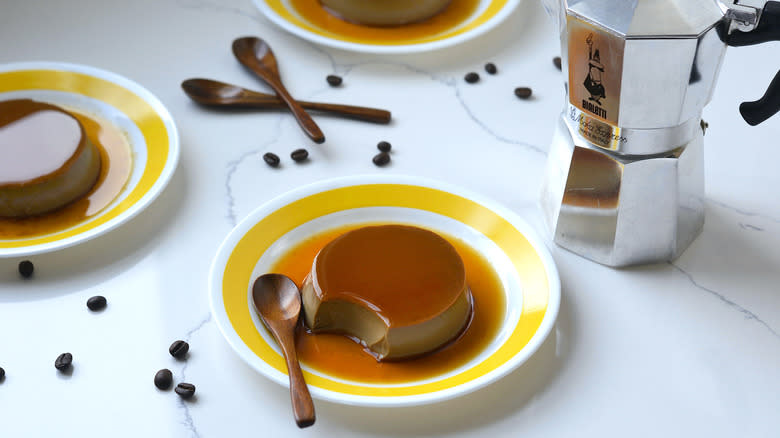
Is there anything more inviting than a silky custard pudding, served up in a puddle of its own bittersweet caramel? What if we added coffee — could you be tempted to swap out that austere morning cup of joe, acidic and dark, for something a little more...saucy?
Ideal for an afternoon pick-me-up or breakfast of champions, this coffee-flavored version of purin (Japanese custard pudding), draws from the kissaten (old-fashioned cafe) culture of Japan. These retro coffee shops, often with a Showa-era or distinctly Western aesthetic, feature richly colored wooden furniture and relics of the 1920s through '80s — think grandfather clocks, plush velvety seating, and delicate china. Unlike modern coffee shops, kissaten are places of relaxation and muted conversation, not work (some don't even offer Wi-Fi!). There's no flurry of fingers over click-clacking keyboards, but only a curl of steam to disturb the air, rising from a porcelain cup. Time slows down here.
At kissaten, desserts like chiffon cake, Mont Blanc, and, of course, purin, are savored rather than gobbled. Created by Tasting Table recipe developer Rika Hoffman, this version of Japanese custard pudding is rich and indulgent, infused with bold espresso flavor and finished with a slightly bitter caramel sauce to temper the custard's sweetness. It's a dessert that's as classic as the kissaten.
Read more: 25 Best Ice Cream Brands Ranked
Gather The Ingredients For Coffee Purin
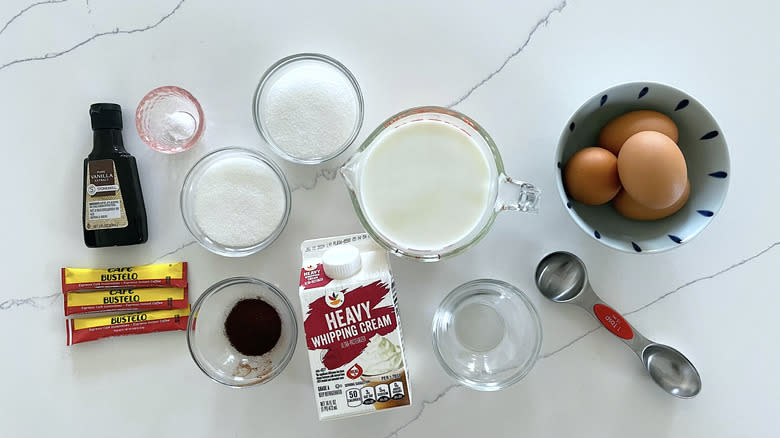
Though this recipe has a fair number of steps, the ingredients list is simple. For the caramel sauce, you'll need just sugar and water. The custard requires whole milk, heavy cream, sugar, eggs, kosher salt, instant espresso powder, and vanilla extract. As for special equipment, gather a few ramekins (this recipe fills 4 6-ounce ramekins) and a large tray that's at least 2 inches deep, which you'll use for a bain-marie.
Step 1: Preheat The Oven
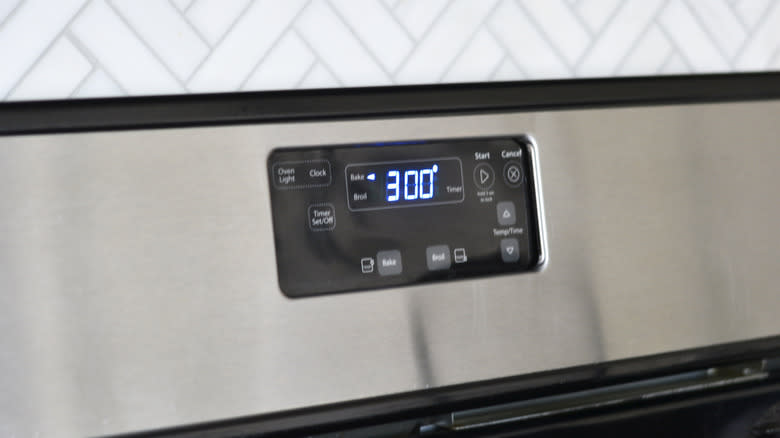
Preheat oven to 300 F.
Step 2: Prepare Your Ramekins
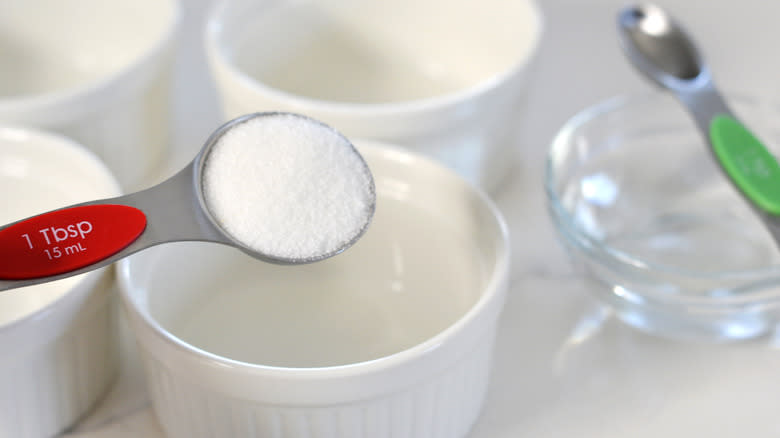
Set out 4 (6-ounce) ramekins. To make the caramel sauce, combine 1 tablespoon sugar and 1 teaspoon water into each ramekin.
Step 3: Heat The Caramel Sauce
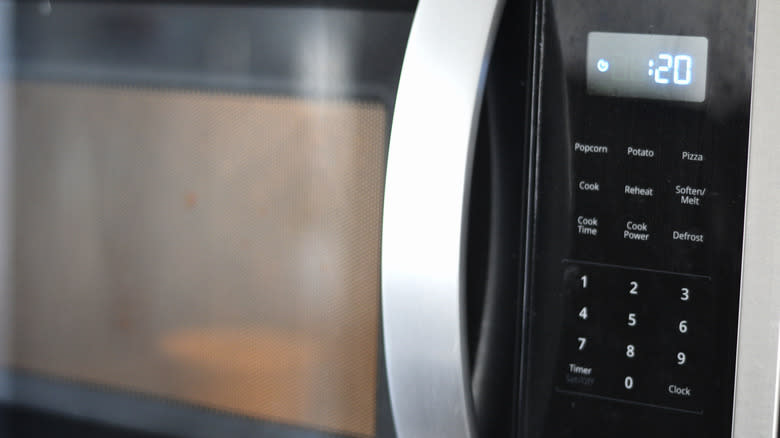
Microwave ramekins for 1-2 minutes in 25-second intervals, occasionally tilting and rotating the ramekins to mix the caramel sauce, until the caramel is golden brown.
Step 4: Quickly Stir The Caramel
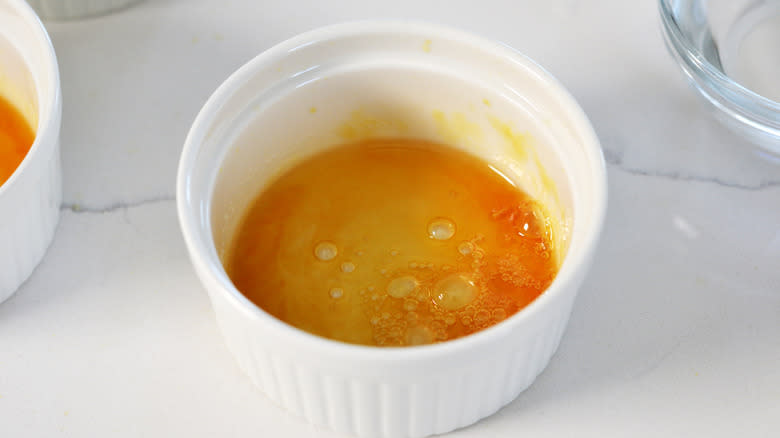
Remove the ramekins from the microwave and immediately stir 1 teaspoon warm water into each before the caramel solidifies. (Use caution so as not to burn yourself, as the mixture will sizzle and sputter.) Set the ramekins aside so the caramel sauce can harden.
Step 5: Start Making The Custard
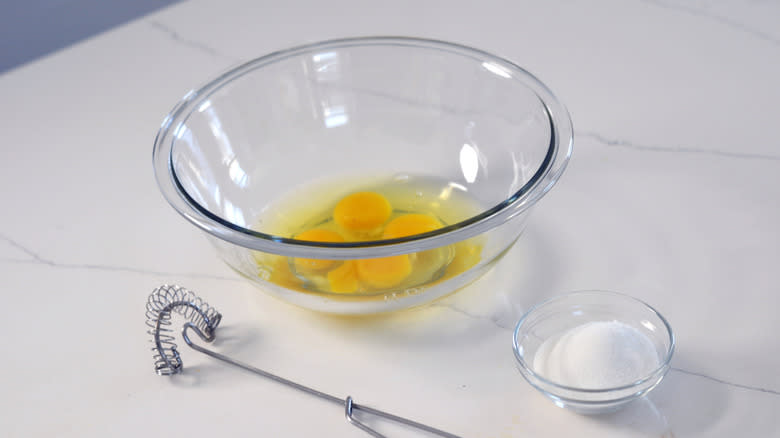
To make the custard, beat the eggs and sugar in a large bowl.
Step 6: Heat The Milk And Cream Mixture
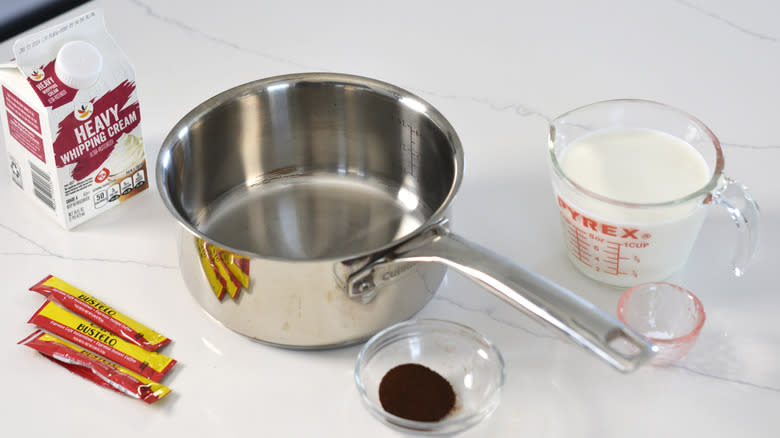
In a saucepan, combine the whole milk, heavy cream, salt, espresso powder, and vanilla. Bring to a simmer, then turn off the heat.
Step 7: Temper The Egg Mixture
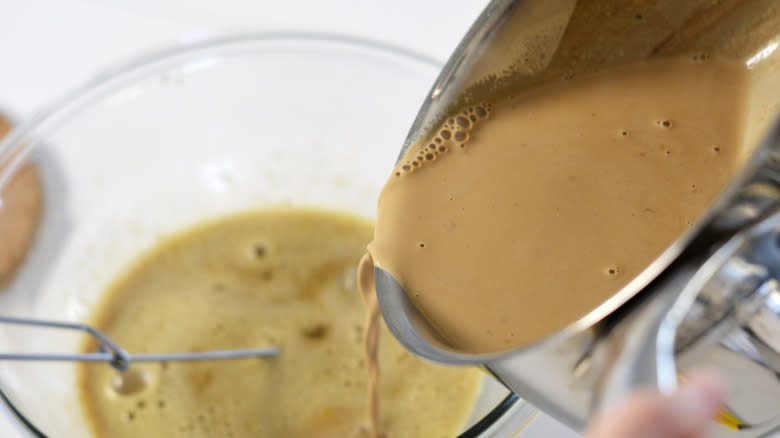
Vigorously stir the egg mixture while streaming the hot milk mixture into the bowl. Pour slowly so as not to curdle the eggs.
Step 8: Strain The Custard
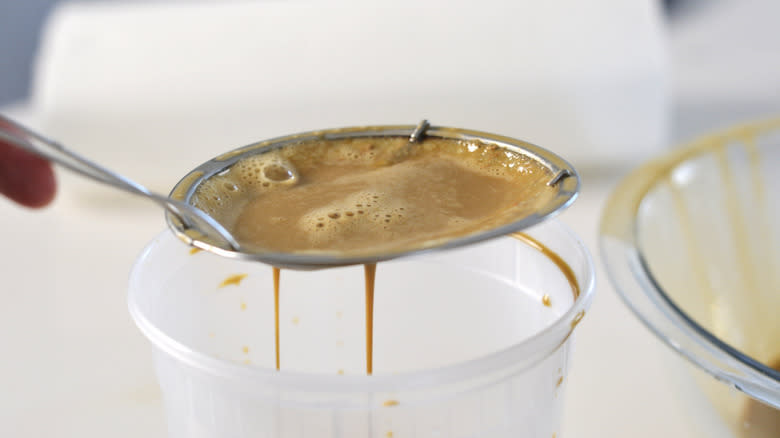
Strain the custard mixture through a sieve to ensure a silky texture. Set aside.
Step 9: Prepare Your Baking Dishes
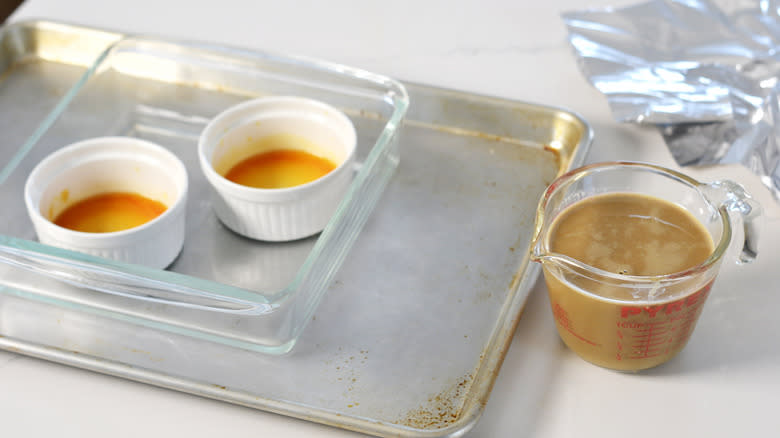
Place the ramekins in a deep, oven-safe pan set on top of a baking tray.
Step 10: Fill The Ramekins
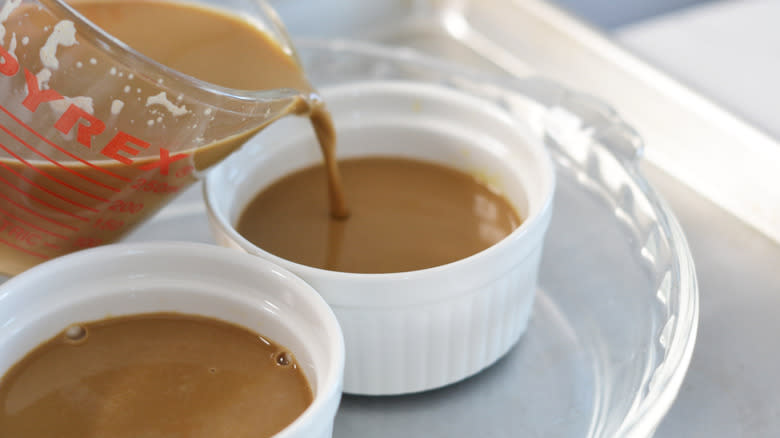
Pour custard into the ramekins.
Step 11: Cover The Ramekins
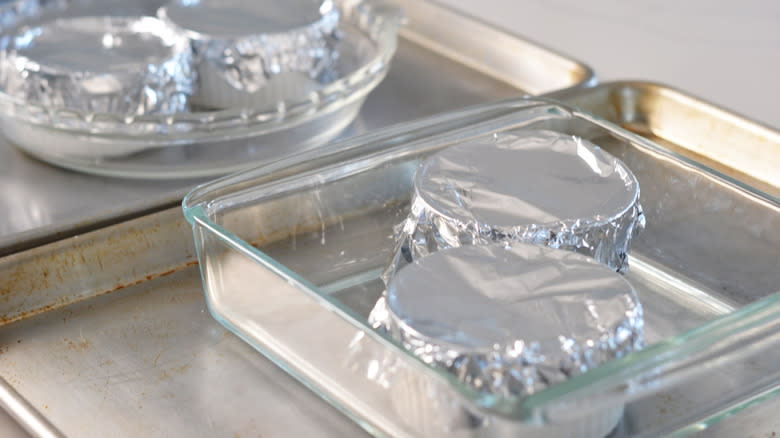
Cover each ramekin with foil.
Step 12: Prepare The Bain-Marie
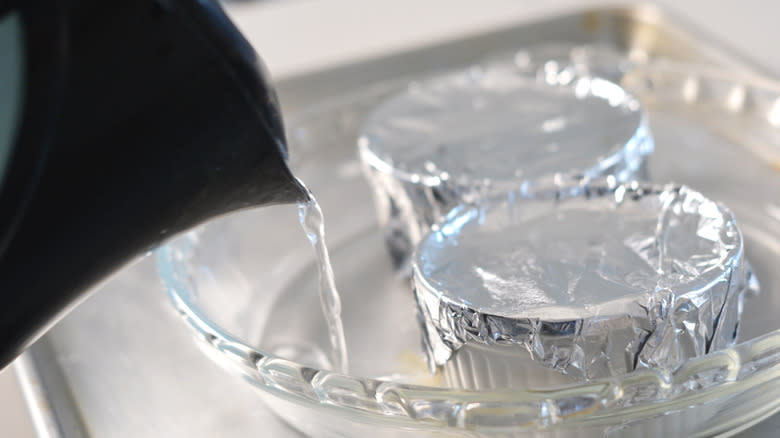
Prepare a bain-marie by adding hot water around the ramekins in the pan. The water should reach halfway up the sides of the ramekins.
Step 13: Bake The Coffee Purin
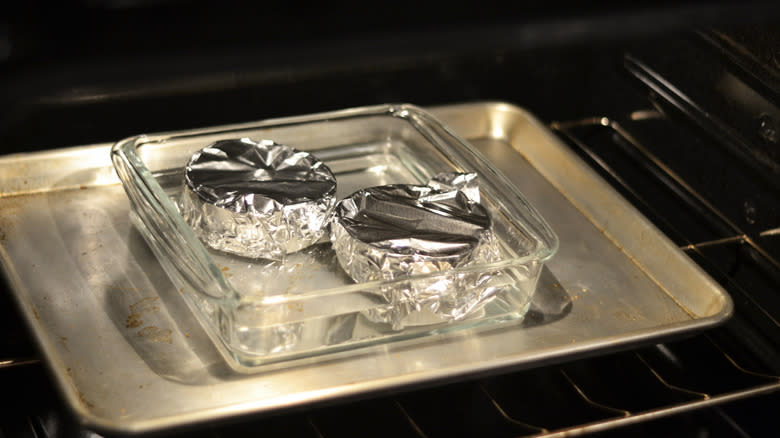
Bake for 45 minutes to 1 hour, depending on the size of the ramekins. (If using 6-ounce ceramic ramekins, this should take about 1 hour.)
Step 14: Check For Doneness
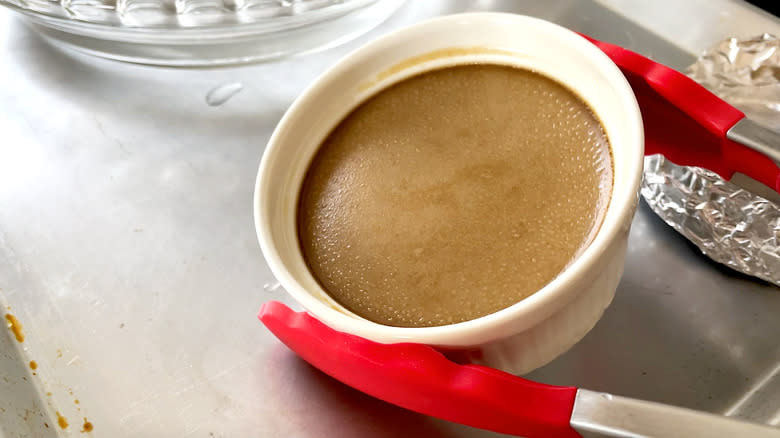
To check for doneness, remove a ramekin from the hot water bath and gently shake or tilt it. It should have a slight jiggle in the center but be firm enough to cling to the edges of the ramekin.
Step 15: Allow The Custard To Cool
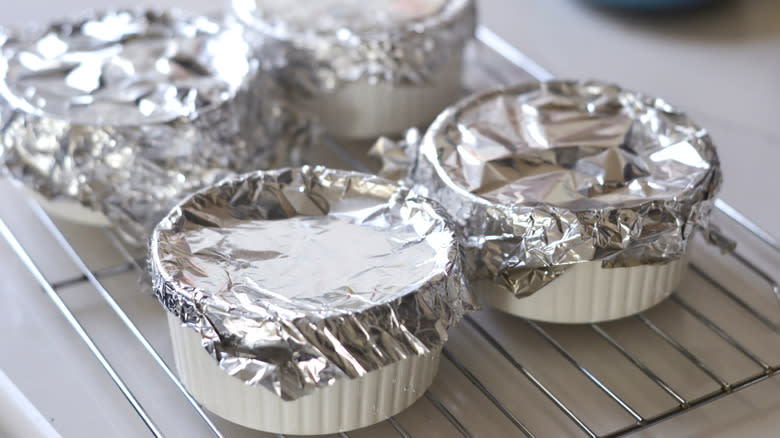
Remove the ramekins from the water bath and let cool to room temperature before refrigerating for 3-4 hours.
Step 16: Unmold The Custard Puddings
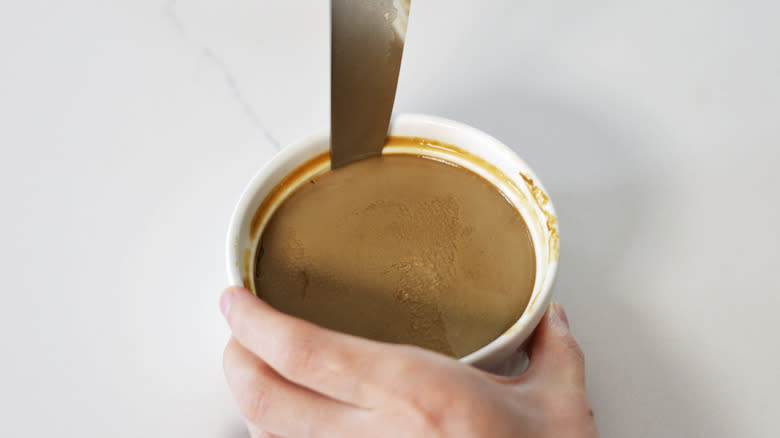
To dislodge the purin, run a knife around the perimeter of the ramekins.
Step 17: Serve And Enjoy
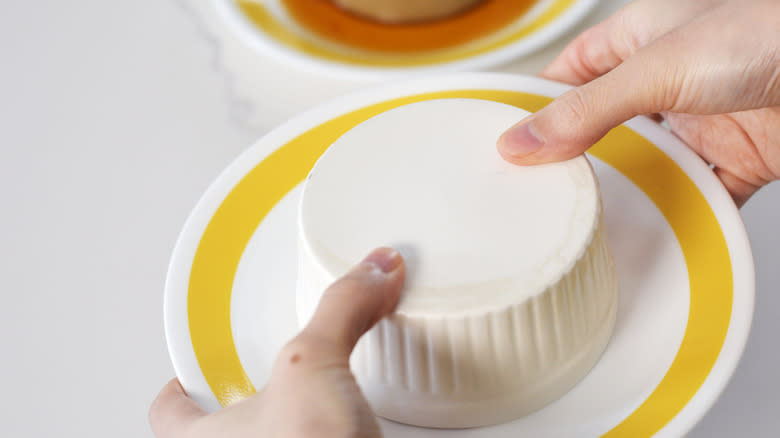
To serve, invert a ramekin onto a plate, shake firmly, and lift the ramekin. Enjoy.
What Is Purin?
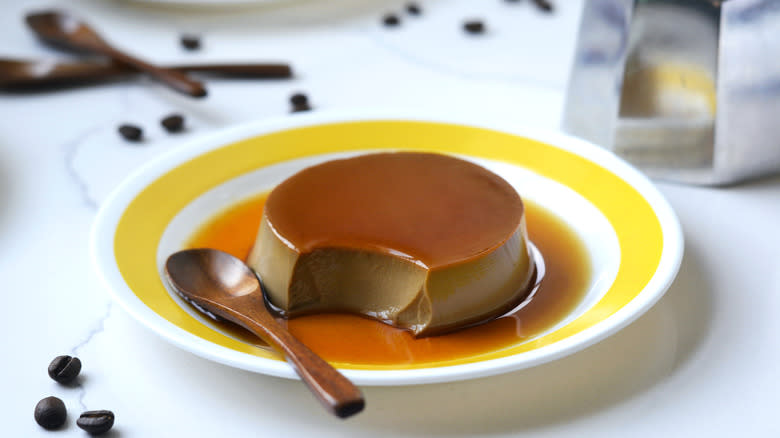
Purin is the Japanese version of custard pudding or creme caramel. There are many regional varieties of this dessert across the globe. Cuban-style flan, for example, uses condensed milk, while Costa Rica has a version with coconut.
In Japan, purin can be found anywhere from convenience stores and kissaten to depachika (underground food halls) in jiggly, single-size portions. Besides the no-bake purin made with gelatin, there are two main types of purin: yaki purin (baked purin) and mushi purin (steamed purin). This coffee purin recipe uses the former cooking technique, which utilizes a bain-marie for slow, even, and gentle cooking.
Many classic Japanese purin recipes use solely whole milk and no heavy cream at all. For a lighter dessert, feel free to adapt this recipe and substitute the cream with an equal amount of whole milk or a combination of both heavy cream and milk.
What Do I Do If My Purin Won't Come Out Of The Ramekins?
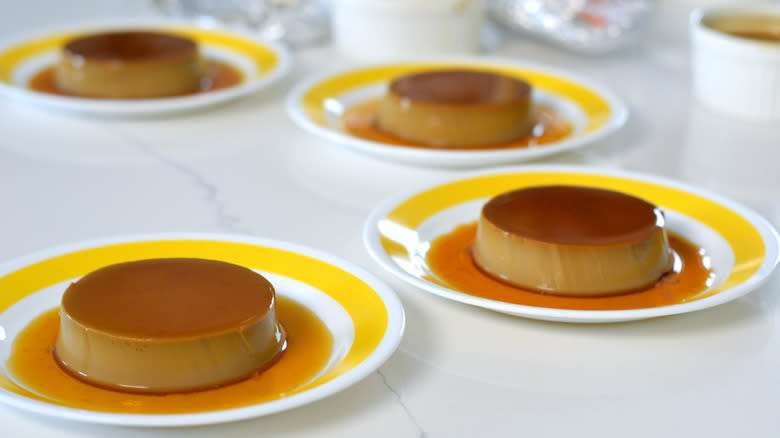
You may have done everything right: The caramel didn't burn and the custard set properly, but when you go to turn your purin out of the ramekins, it won't budge. If the custard pudding is still stuck even after running a knife all the way around the edge, there's one more trick you can try. Heat a couple inches of water in a saucepan until it reaches a simmer, turn off the heat, then dip the bottom of the offending ramekin into the hot water for 5-10 seconds. This should help loosen the caramel.
When inverting the ramekin onto a plate, be brave — give it one assertive, firm shake to dislodge the purin. You should feel the weight of the purin shift from the ramekin to the plate and see caramel sauce pooling out from under the rim of the ramekin. And if all else fails, you can always grab yourself a spoon and dig in!
Coffee Purin (Egg Custard Pudding) Recipe
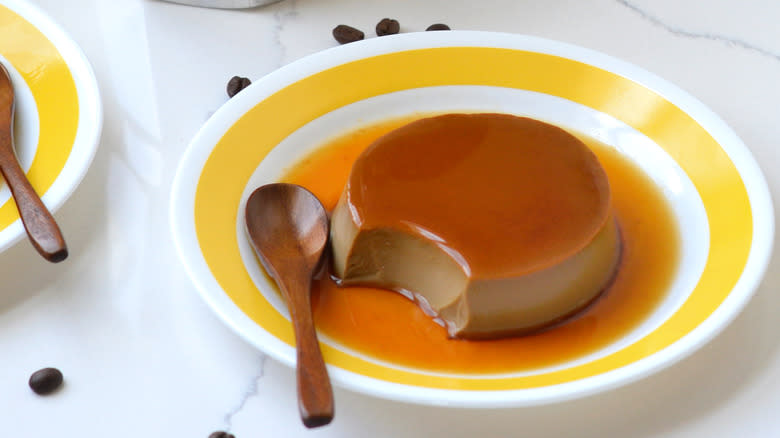
Prep Time: 3h 30mCook Time: 1h 5mYield: 4 6-ounce creme caramelsIngredients
:::For the caramel sauce:::
4 tablespoons granulated sugar, divided
4 teaspoons water, divided
4 teaspoons warm water, divided
:::For the custard:::
4 large eggs
4 tablespoons granulated sugar
400 milliliters (approximately 1 ⅔ cups) whole milk
120 milliliters (approximately ½ cup) heavy cream
¼ teaspoon kosher salt
3 (2-teaspoon) sachets instant espresso powder
½ teaspoon vanilla extract
Directions
Preheat oven to 300 F.
Set out 4 (6-ounce) ramekins. To make the caramel sauce, combine 1 tablespoon sugar and 1 teaspoon water into each ramekin.
Microwave ramekins for 1-2 minutes in 25-second intervals, occasionally tilting and rotating the ramekins to mix the caramel sauce, until the caramel is golden brown.
Remove the ramekins from the microwave and immediately stir 1 teaspoon warm water into each before the caramel solidifies. (Use caution so as not to burn yourself, as the mixture will sizzle and sputter.) Set the ramekins aside so the caramel sauce can harden.
To make the custard, beat the eggs and sugar in a large bowl.
In a saucepan, combine the whole milk, heavy cream, salt, espresso powder, and vanilla. Bring to a simmer, then turn off the heat.
Vigorously stir the egg mixture while streaming the hot milk mixture into the bowl. Pour slowly so as not to curdle the eggs.
Strain the custard mixture through a sieve to ensure a silky texture. Set aside.
Place the ramekins in a deep, oven-safe pan set on top of a baking tray.
Pour custard into the ramekins.
Cover each ramekin with foil.
Prepare a bain-marie by adding hot water around the ramekins in the pan. The water should reach halfway up the sides of the ramekins.
Bake for 45 minutes to 1 hour, depending on the size of the ramekins. (If using 6-ounce ceramic ramekins, this should take about 1 hour.)
To check for doneness, remove a ramekin from the hot water bath and gently shake or tilt it. It should have a slight jiggle in the center, but be firm enough to cling to the edges of the ramekin.
Remove the ramekins from the water bath and let cool to room temperature before refrigerating for 3-4 hours.
To dislodge the purins, run a knife around the perimeter of the ramekins.
To serve, invert a ramekin onto a plate, shake firmly, and lift the ramekin. Enjoy.
Read the original article on Tasting Table.

